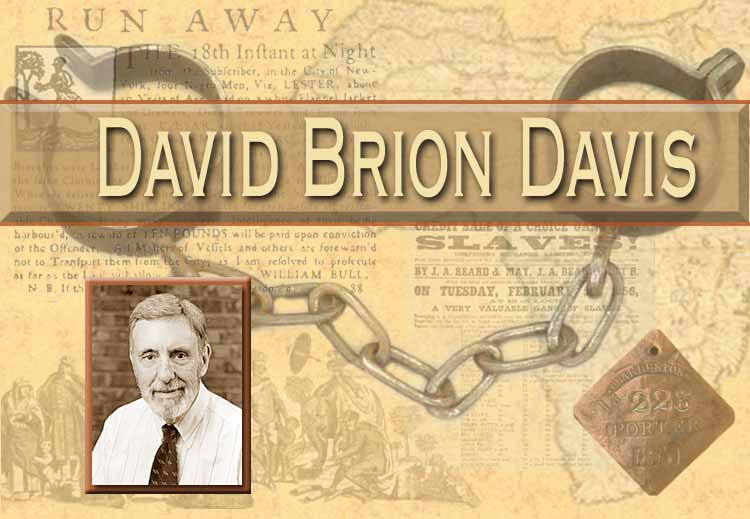Reviewed Work:
David Brion Davis, Inhuman Bondage: The Rise and Fall of Slavery in the New World (New York: Oxford University Press, 2006), pp. 464. $30.00
David Brion Davis Talks About His Book (interesting video and discussion)

In the last several decades, historians of slavery and abolition have started engaging with a transatlantic framework. This shift has encouraged scholars to reexamine the implications of events such as the French Revolution, the Demerara slave rebellion, and the American Civil War on the various systems of slavery throughout the New World. David Brion Davis’ Inhuman Bondage is one of the foundational works using such an approach (Blackburn’s trilogy also deserves mention). His study provides a synthesis in two ways. First, he narrates the connectedness between the “rise and fall” of various systems of slavery throughout the Americas. Second, he delivers an overview of the historiographical debates on slavery and abolition in the New World, offering insightful comments wherever possible. Such a combination is difficult to achieve for any scholar, not to mention Davis’ ability to use narrative and structural writing methods.
One of the major themes running throughout Davis’ work deals with the flexibility, adaptability, and “multinational character of the Atlantic Slave System” (12). Following a brief anecdotal chapter on the Cuban slaver La Amistad, Davis moves into a discussion about the foundations of slavery, starting with neo-Babylonian society. Here he builds on Orlando Patterson’s Slavery and Social Death (1985) and the idea that “inhuman bondage” is the treatment “of humans as nonhuman beasts of burden” (35). This understanding is the first of two definitions given for his phrase “inhuman bondage.” The second connotation of “inhuman bondage” refers to “special harshness” of New World slavery, which white colonists confined to black Africans (and Native Americans). After establishing the foundations of “inhuman bondage,” Davis quickly moves into history of the “rise and fall” of slavery in the New World.
After reading Davis, it is apparent that from the beginning slavery was full of contradictions, which later fueled the debates between proslavery and antislavery constituencies. One contradiction, for example, deals with the slaves being legally defined by the various legal bodies as chattel (the equivalent of dogs, cattle, or horses), but also held accountable for being morally sensible people (the law recognized the slaves could runaway, commit murder, steal, and in times of desperation they even armed slaves). This, according to Davis, was the basic “problem of slavery” (35). Another interesting contradiction was the issue of slavery in the United States. Davis argues that slavery in the United States was “the most hypocritical contradiction in all-human history,” a nation that promoted freedom and democracy, which was built off the backs of slaves.
Historians have vetted both paradoxes, but it raises a series of interesting questions: how important were these “paradoxes” to the larger downfall of the Atlantic Slave System? Was this system doomed to fail from the beginning? Are these paradoxes specific to the development of the New World? Could these uncertainties help explain why antislavery activism began in earnest in the late eighteenth century, after almost three thousand years of existence?
After reading Davis’s comparative chapters on British and American abolitionism, I also was struck by another intriguing question: where does religion and economics fit into our understanding of Atlantic abolitionism? More specifically, it appears that historians explain British abolitionism through economics and American abolitionism through religion. I am not saying that historians have completely ignored one or the other. However, after reading Davis’ summary of the historiographical fields, I realized that historians of slavery and abolition often focus on British economics (i.e. Williams’ thesis or the benefits of free labor) and American religion (i.e. moral suasion and the Second Great Awakening).
Davis’ study is a wonderful work for both experienced and novice students of slavery and antislavery. This work also provides a wonderful introduction for undergraduates and the general public, especially those unfamiliar with such topics. Davis’ monograph has a few shortcomings such as the lack of attention on Native American slavery, the sometimes-jarring switches from topics such as colonial North American slavery to the Soviet Gulag, but such inadequacies should be expected in a work that covers such as vast geographical and temporal range. I also believe it would be fruitful for historians to extend this examination with a comparative analysis of slavery and abolition in the East, especially in regions such as India and China. In short, Davis’ Inhuman Bondage provides a wonderful introduction or fresher on the similarities, differences, and connections between various system of slavery and abolition throughout the New World.

